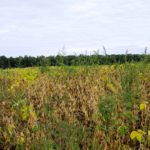
Advanced soil sampling
It’s time to get excited about soil testing again… seriously!

Research digs into the question of deep banding
The practice could make immobile nutrients more available for three major crops

2 covers — 25 species
P.E.I. potato growers are exploring diverse approaches to solve their low organic matter levels with cover crops

Tillage erosion costing farmers billions
The pressure to get an early start on newer crops such as corn and soybeans encourages tillage practices which may not be sustainable

Is it time you get started with a cover crop?
Cover crops may not be as simple as we used to think. But they aren’t that complex either

Rotation refresher
More than crops, more than herbicides, it comes down to planning for success — with everything

The crop rotation effect
At last, scientists hope to explain exactly why rotations are such a good practice

Empty soils
Today’s big-yield genetics really are draining the nutrient supply in our soils

Real sustainability
Integrating the benefits of his Ontario Soil Network membership into how he farms is helping Rick Kootstra find real sustainability

Is split N really best?
The debate continues, with a focus on technology, soil and weather — and then being prepared to break with tradition


